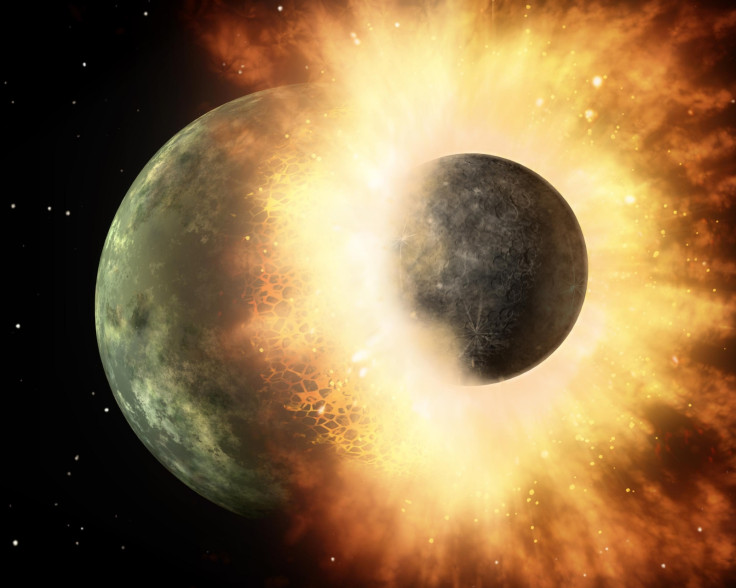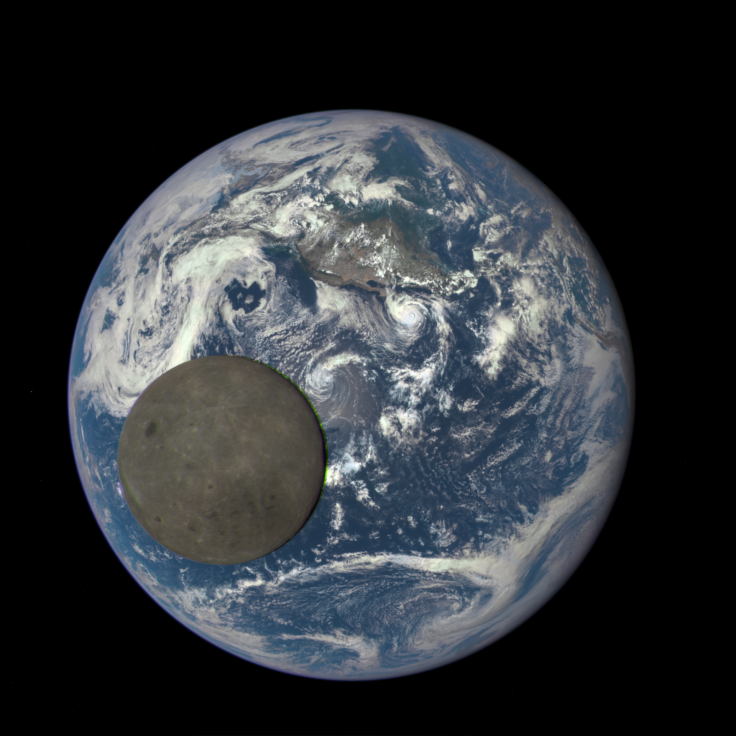How the moon ended up exactly where it did
Theory helps explain why Earth and Moon share same chemistry and why it orbits our planet on a tilt.
The mystery of how the Moon ended up where it did in the solar system is a step closer to being solved. In a new model of the moon formation, scientists have said a singly but extremely energetic impact between the Earth and a protoplanet can explain the Moon's composition and its unusual orbit.
The most popular theory of how the moon formed is that after the solar system and the planets formed, there was an 'impactor' phase, when hot protoplanets collided with each other. It is thought an object around the size of Mars – dubbed Theia – hit Earth. The material ejected during this collision eventually condensed to form the Moon.
However, there are two main problems with this theory. The first is that the Moon has very similar to Earth in its composition – if the impact theory is correct, the Moon's make-up should be a mix of both Earth and Theia.
The second is that the Moon orbits Earth on a tilt. If it was made from a disk of material that was rotating around Earth's equator, the moon should be in an orbit over Earth's equator. Instead, it orbits around five degrees off the equator.

Addressing these problems, Sarah Stewart, from the University of California, Davis, and colleagues developed a new model that explain the inconsistencies. Their work, published in Nature, point to a far more energetic collision than has previously been predicted.
Initially, the Moon was close to a fast spinning Earth. Eventually the planet slowed and the Moon moved further away, resulting in the 24-hour cycle we see today. Scientists know this by looking at the tidal forces that operate between the two bodies.
In their study, researchers say a higher energy collision between Earth and Theia than previously proposed. The impact would have resulted in vaporised molten material from which both Earth and the Moon formed. The material was mixed up – explaining why the Moon and Earth have such a similar composition.

At first, Earth's axis pointed towards the Sun and it spun very fast – resulting in a two-hour day. Over time, the angular momentum was dissipated. Earth slowed down and the Moon moved further away. Eventually, the angular momentum of the Earth-moon system transferred to the Earth-Sun system and Earth's axis tilted perpendicular to the Sun.
Over the next ten million years the Moon slowed even more and eventually ended up at the five degree angle orbit seen today. Concluding, Stewart said: "One giant impact sets off the sequence of events."
© Copyright IBTimes 2025. All rights reserved.






















